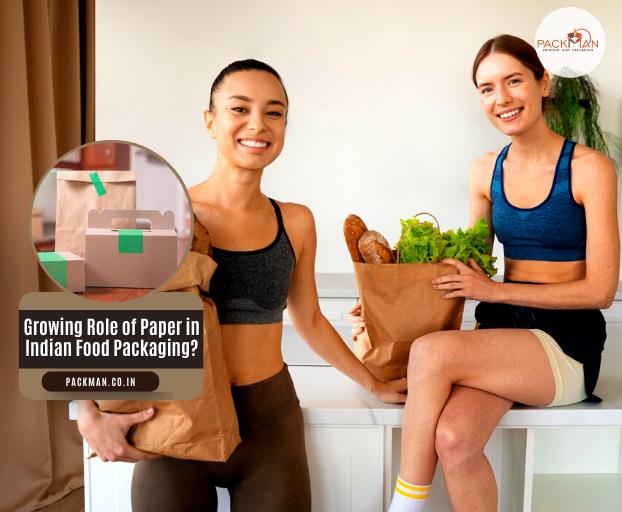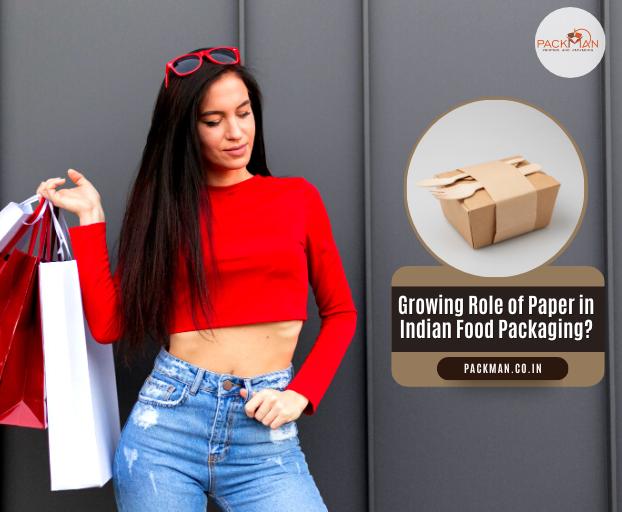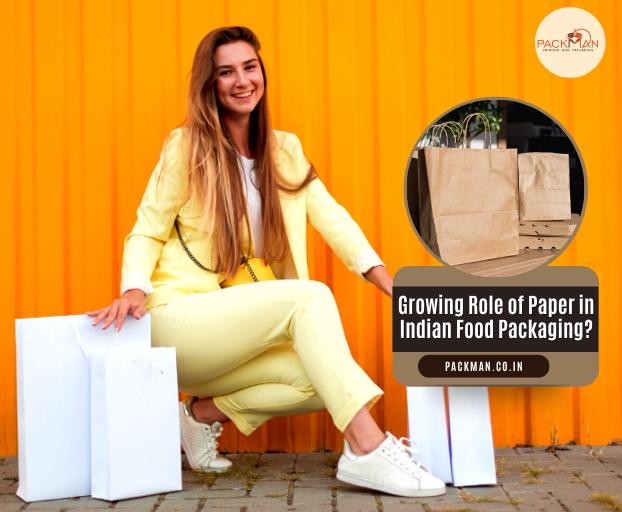The outcome of plastic waste on the environment has become a pressing global issue, and the food industry has been a huge contributor to the problem.
In recent times, there has been a huge interest in paper-based options to plastic for food packaging. Paper-based packaging is usually, is considered to be a more sustainable alternative to plastic since it is biodegradable and is recyclable or composted. But can paper-based food packaging outdo plastic in terms of functionality, cost-effectiveness, and durability?
In this article, Packman Packaging India’s leading food packaging manufacturer talks about whether paper alternatives are the finest long-term solution over traditional plastic packaging.
Food products require adequate protection and preservation from paper packaging.
Paper-based packaging has come a long way in recent years for preserving food products. Corrugated board, for instance, has become a popular option for transporting fresh produce such as fruit and vegetables. The process needs to bond its layers to kill bacteria at high temperatures and its recyclability discourages repeated use, lowering the risk of cross-contamination.
Several manufacturers have also begun using aseptic paper packaging in recent years, which is made when both the food products and packaging are sterilized using a heated hydrogen peroxide bath. It keeps products such as milk, coffee, and fruits and vegetable fresher for longer since there is no chance of pathogens making it into the products.
However, paper packaging for food products is generally, laminated having layers of aluminium or plastic to act as a barrier against oxygen and water vapour. Paper also makes up nearly 26% of landfill waste, despite being quite recyclable and reusable. This somehow discredits the sustainability of paper packaging.
So, while at a primary glance, paper-based packaging alternatives may seem like the most sustainable option, brands will think carefully about whether paper packaging’s sustainability credentials will offset other hurdles
Is paper packaging more profitable?
Plastic is an appealing alternative for manufacturers, being the most economical of all common packaging materials to make. One study observed that it takes 3.4 times as much energy to make 1,000 paper bags compared to plastic bags.
However, the commitment of younger buyers to fighting climate change has enhanced the demand for paper packaging. According to a recent survey, almost 86% of consumers below 45 are willing to pay more for sustainably packaged products.
In April 2022, the UK introduced a plastic packaging tax (PPT), which has also been introduced in several EU countries, that includes Italy and Spain. Any plastic packaging having less than 30% recycled plastic made or imported into the UK is taxed at £200 per tonne.
And the US could also, follow these countries by introducing its own PPT, which would discourage manufacturers from using those materials and reduce plastic pollution in the long term.
A widespread ban on single-use plastics might also be implemented. There have been minor initiatives towards this, like the US Interior Department’s plans to phase out the sale of single-use plastic products in national parks and other public lands by the year 2032. Overall, these steps would make recyclable alternatives such as paper-based packaging more appealing.
How properly does paper packaging maintain brand identity?
A recent global survey witnessed that 75% of companies have committed to sustainable packaging. While sustainability is essential, companies should ensure this does not jeopardize the design or accessibility of their packaging. Packaging needs to be easy for customers to use, and this needs to be the priority when selecting sustainable packaging for products.
Likewise, opting for a material that prohibits the style of the brand may cause a backlash. One instance of this was when a top FMCG brand changed its wrappers to be more eco-friendly, resulting in a dull color that outraged fans.
Paper packaging isn’t the sole sustainable option for foods.
Paper is one of the simplest materials to recycle, with around a 68.2% recycling rate in the US. In spite of this, only 20.8% of paper containers and packaging are recycled. As said earlier, more than a quarter of landfill waste is made up of paper materials.
This is partly caused due to the issue of “wish cycling” — the disposal of waste items that can’t be recycled in the recycling bin. While it is done with good intentions, hoping that these items will be recycled, it has the opposite impact.
Wishcycling is either non-recyclable waste or recyclable waste that is filled with contamination Items can solely be recycled if they are free from residue like food, and paper food packaging is specifically, at risk because it is mostly harder to clean than plastic or glass containers.
There have been several other advances in sustainable packaging materials. Compostable corn starch can now be utilized for plates and trays, serving as a top alternative to polystyrene takeaway boxes that would otherwise be sent to landfill.
Even mushrooms and avocado seeds could make packaging, having the probability of turning avocado seeds into a plastic replacement. All of them are biodegradable and even compostable, needing far less space post its use than traditional plastic packaging.
So, can paper packaging outperform plastic for foods?
Paper is a useful packaging material, but manufacturers can be more creative and open-minded in their search for eco-friendly options for plastic. The future holds a range of advances in sustainable materials that will see several changes in the way food is packaged. However, until new technologies can be properly tested in a practical sense, it will be a certain time before the industry experiences widespread uptake of 100% alternative food packaging materials.






